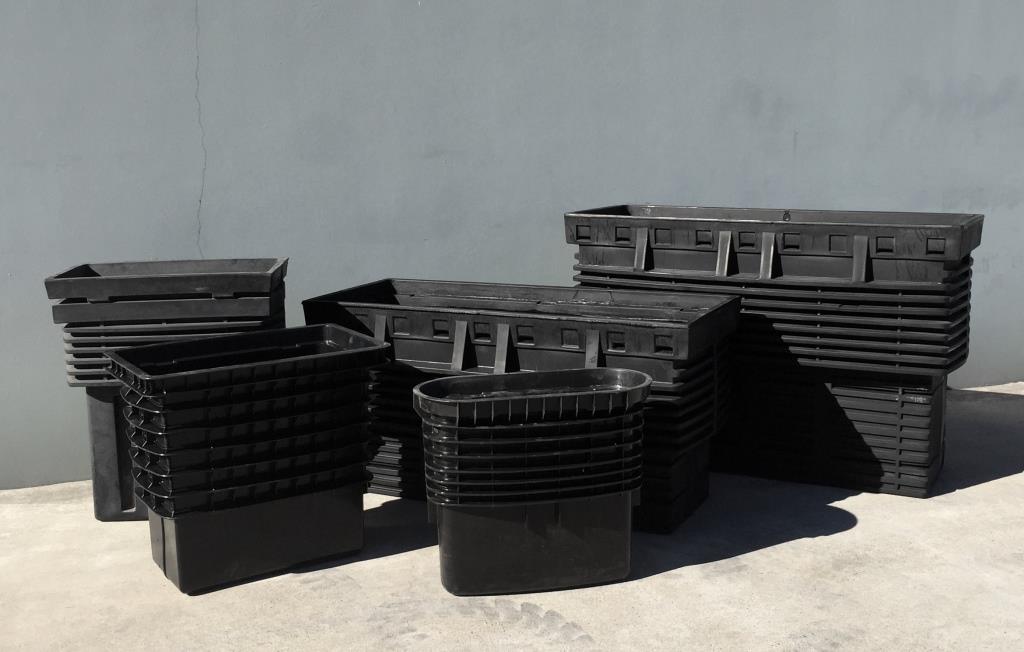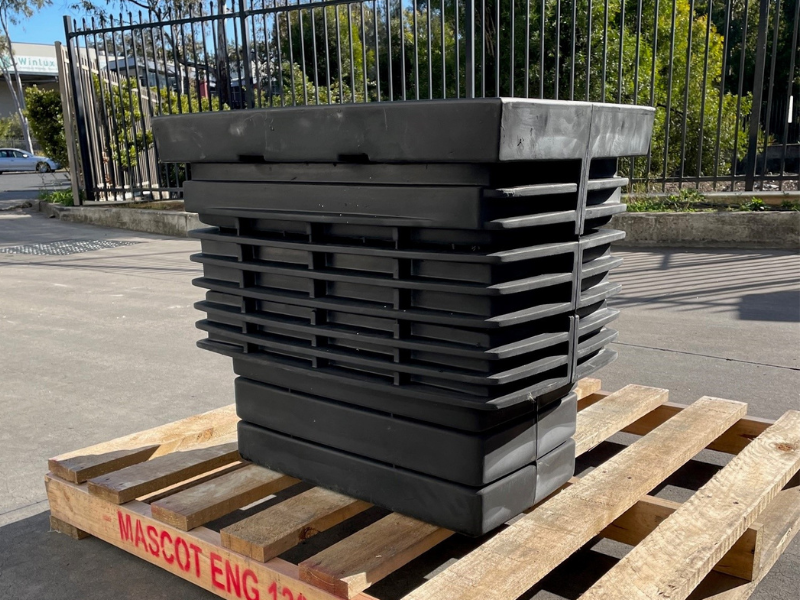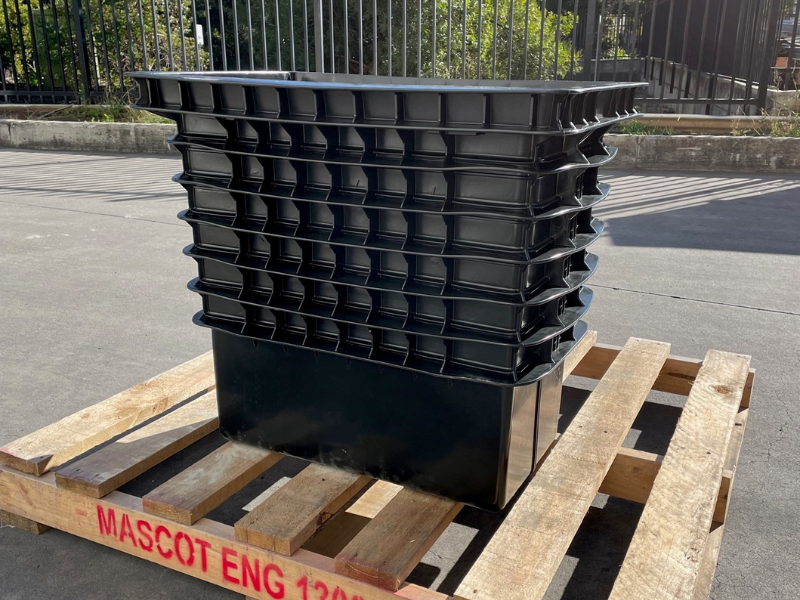Plastic (Polyethelene)

Plastic – Rotational & Injection Moulding
There are two commonly used manufacturing methods for Plastic pits in Australia known as rotational and injection moulding.
Generally, injection moulded pits are used in the smaller range (P1 to P5) and the rotational moulded process is used in the larger pits (P6 to P9). However, we offer the P5 pit in both injection and rotational moulding. You can tell the difference in the process by inspecting the finished product… the injection moulded plastic pit is brighter/shinier than the more dull finish found on a rotational moulded plastic pit.
Below you’ll find some information on the difference between the two manufacturing processes.
Rotational Moulding (Rotomoulding):
Rotational moulding, also known as rotomoulding or rotational casting, is a manufacturing process used to produce hollow and seamless plastic products. The process involves the following steps:
- Loading: Plastic resin, typically in powder form, is loaded into a hollow mould cavity.
- Heating: The mould is rotated biaxially in an oven, and it gradually heats the mould. The plastic powder melts and coats the interior surface of the mould, forming a uniform layer.
- Cooling: The mould is then cooled to solidify the plastic and retain the desired shape.
- Ejection: After cooling, the mould stops rotating, and the finished product is ejected from the mould.
Rotational moulding is ideal for large, complex, and hollow objects, such as large storage tanks, playground equipment, kayaks, and more. It offers design flexibility and relatively low tooling costs compared to other methods.

Injection Moulding:
Injection moulding is another common plastic manufacturing process used to create a wide range of plastic products. It involves the following steps:
- Plastic Pellet Melting: Plastic resin pellets are fed into a heated barrel, where they are melted into a molten state.
- Injection: The molten plastic is injected under high pressure into a closed mould cavity, filling the mould and taking its shape.
- Cooling and Solidification: The plastic cools and solidifies inside the mould, assuming the shape of the mould cavity.
- Ejection: Once the plastic has solidified, the mould opens, and the finished product is ejected from the mould.
Injection moulding is suitable for producing high volumes of intricate and small to medium-sized objects, such as bottle caps, automotive components, electronic housings, and more. It allows for precise and consistent production of complex shapes.


